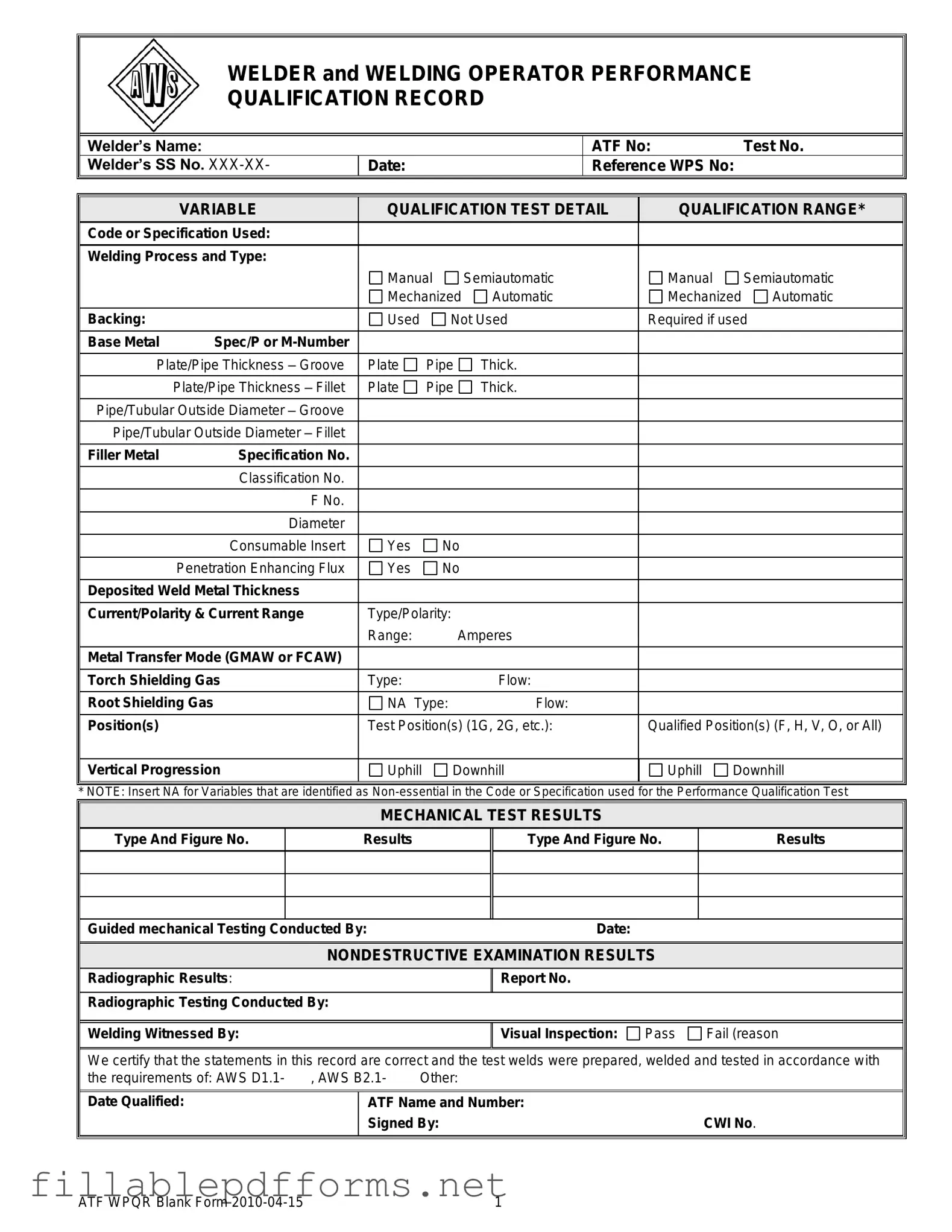The Welder Performance Qualification Record (WPQR) form is an essential document used to verify a welder's skills and qualifications in various welding processes. This form captures critical information about the welder, including their name, identification numbers, and the specific tests they have completed. Each WPQR outlines the details of the qualification test, such as the reference Welding Procedure Specification (WPS) number, the type of welding processes used—ranging from manual to automatic—and the materials involved, including base metal specifications and filler metal classifications. It also provides insight into the test conditions, including the thickness of materials and the positions in which the welding was performed. Furthermore, the form includes results from mechanical tests and non-destructive examinations, ensuring that the welds meet industry standards. By documenting the welder's performance and the testing outcomes, the WPQR serves as a formal record that can be referenced for compliance with various codes and specifications, ultimately supporting the integrity and safety of welding operations.
